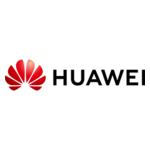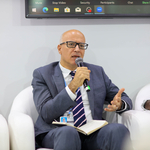
Innovative Design Cuts CO2 Emissions in Data Centers
SHARM EL-SHEIKH, Egypt–(BUSINESS WIRE)–Huawei’s ability to build more energy-efficient data centers could be an example to others as decarbonization of the construction sector picks up worldwide, according to a company spokesperson.
Andrew Williamson, Vice President of Government Affairs and Economic Advisor at Huawei, said “smart” digital infrastructure and buildings are becoming especially common in China’s Guangdong–Hong Kong–Macao Greater Bay Area (GBA).
“The modularization of data center facilities creates new possibilities for fast construction and with a lower carbon footprint,” said Williamson, who stressed that construction times can be reduced to six months from 18 months, thanks to steel prefabricated design.
“This solution uses much less concrete than conventional buildings, and carbon emissions in the construction phase could be offset by more than 90 percent,” he said.
Williamson made the remarks as he addressed a session organized by the Global Alliance for Buildings and Construction (GlobalABC) and German Energy Agency at the Buildings Pavilion during the ongoing 27th Conference of the Parties, or COP27, in Sharm El-Sheikh, Egypt. The session also included speakers from the German Federal Ministry for Economic Affairs and Climate Action (BMWK), the Chinese Academy of Building Research, the World Resources Institute, ICLEI East Asia, Shenzhen Institute of Building Research and JA Solar.
“The process itself is really important to get collaboration in motion in the decarbonization of the buildings sector. Essentially it is about bringing the different actors together, getting them to talk to each other and agree on a shared vision and some targets, and to agree on the actions that need to be implemented to transform the sector,” said Jonathan Duwyn, Head of Buildings and Construction Portfolio at the United Nations Environment Programme.
In terms of building green and eco-friendly campuses, Huawei has adopted rooftop photovoltaics (PVs) for many of its own facilities, including the Huawei Dongguan Southern Factory. It has also consistently increased the use of electricity from renewable energy sources, which rose by 42.3 percent to 300 million kWh in 2021.
In its headquarters in Shenzhen and Dongguan of China’s GBA area, Huawei’s campuses are both fully powered by clean energy. Elsewhere in the country, the Chengdu Research Center was the first of its kind for the company to achieve net-zero carbon operations.
The company has also contributed in the concerted global effort to power COP27 with clean solar energy. Together with its partner Infinity Power, Huawei supplied all string inverters to the 6MW solar project that has lit up the COP27 conference center.
The solar plant is expected to generate up to 11,723 MWh of energy a year. That can power 5,000 homes and reduce 4,000-plus tons of CO2 emissions annually.
“The project will also provide green electricity to Sharm el-Sheikh for years to come,” said Williamson.
About Huawei
Founded in 1987, Huawei is a leading global provider of information and communications technology (ICT) infrastructure and smart devices. We have 195,000 employees and we operate in more than 170 countries and regions, serving more than three billion people around the world.
Our vision and mission is to bring digital to every person, home and organization for a fully connected, intelligent world. To this end, we will work towards ubiquitous connectivity and inclusive network access, laying the foundation for an intelligent world; provide diversified computing power where you need it, when you need it, to bring cloud and intelligence to all four corners of the earth; build digital platforms to help all industries and organizations become more agile, efficient, and dynamic; and redefine user experience with AI, making it smarter and more personalized for people in all aspects of their life, whether they’re at home, on the go, in the office, having fun, or working out. For more information, please visit Huawei online at www.huawei.com or follow us on:
http://www.linkedin.com/company/Huawei
http://www.twitter.com/Huawei
http://www.facebook.com/Huawei
http://www.youtube.com/Huawei
Contacts
Huawei, Francis Yang, +86 13871384929, yangmingxi1@huawei.com


